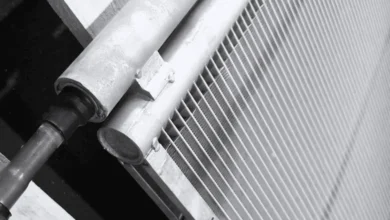Types of Powder Coating Technology
Powder coating technology refers to the process of applying electrically charged powder particles onto a surface. A powder coating gun is used to electrically charge the powder and propel it to the part you want to powder coat. The charges on the powder are measured in kilovolts. Powder coating guns for sale at a low price have a pre-selected kilovolt rating, while the expensive ones allow you to choose the pre-selected kilovolt rating.
There are two types of powder coating technologies to consider. They are:
- Corona
- Tribo
Corona
In corona powder coating technology, the source of force for material transport is from an electric field created between the part and the charged powder cloud. Coating guns in corona technology disassociate air and generate a positive and negative ions stream, imparting a corresponding charge to the powder cloud.
The charged cloud’s and gun electrode’s potentials combine to produce an electric field with the part (opposite pole). In the gun, charged powder particles seek the opposite pole’s lower potential (the part).
Another key feature is the method used to charge the powder particles electrically. A high voltage generator is used in a corona gun to charge an electrode, ensuring a high potential difference between the part and the electrode. The charged electrode dissociates air and produces tons of charged particles which efficiently charge the powder cloud and generate a charged field relative to the opposite pole.
What is the Corona Technology Best Suited for?
- Parts that require relatively thick coating
- Applying powders that have a high abrasive degree
- Multiple custom coats
- Part geometry that is not susceptible to Faraday cage areas
- Parts made of material that has higher charge conductivity
The Corona gun uses the phrase “100 kV” in reference to the high voltage generator rated at 100,000. The generator creates an arc that dissociates air and generates an electron cloud. In comparison to the piecework, the electrode of the gun is usually negatively polarized. For nylon powders that require a positive charge, the polarities need to be reversed.
Corona powder-coated guns with low voltage ratings (some having as low as 16 kV) raise serious concerns about the amount of charged particles generated at such a low power rating.
Tribo
Material transport in the tribo powder coating system is determined by the speed at which powder is released by the powder coating gun when the compressed air causes airflow.
The tribo gun charges the powder solely through physical contact and motion between a surface for receiving and donating electrons and the powder. The speed at which the powder is released from the gun determines the transport of the powder.
What is the Tribo Technology Best Suited for?
- Parts made of material that has low charge conductivity
- Parts that require a thin coating
- Parts susceptible to faraday cage areas generation
- Parts that need coating uniformity of the highest degree
- Applying powders that have abrasive in a high degree
- Touch-up applications
- Parts that require the best possible appearance
- Epoxy coating
As we have seen above, there are two main types of powder coating technology suitable for different conditions. It is crucial to choose the right one to ensure you perform your powder coating tasks fast and efficiently.






